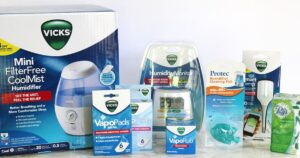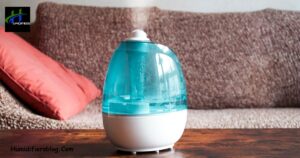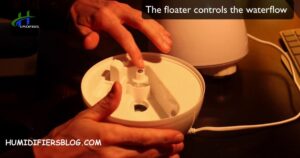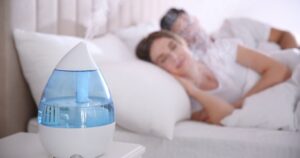Increasing humidity without a humidifier can be achieved by placing water-filled containers near heat sources to allow evaporation. Incorporating houseplants that release moisture through transpiration can contribute to higher humidity levels. Hanging damp towels or using a water-filled basin in the room can also enhance atmospheric moisture without the need for a humidifier.
Unlock the mystery of turning your home into a moisture rich haven with our guide on how to increase humidity without a humidifier? Dive into clever techniques using household items that redefine comfort without the need for specialized equipment.
Bid farewell to dry air as we unveil simple yet effective ways to elevate humidity levels naturally and effortlessly. It can be increased by placing water containers near sunny windows to benefit from solar evaporation.
Opt for moisture-releasing activities like drying clothes indoors or simmering a pot of water with aromatic spices. Incorporate humidity-loving décor elements such as indoor fountains or strategically positioned aquariums to create a visually appealing and comfortable environment.
Natural Evaporation Techniques
Natural evaporation techniques offer a straightforward and effective means of increasing indoor humidity without relying on a humidifier. Two key methods, the placement of water-filled containers and the strategic use of wet towels, harness the power of gradual evaporation to enhance atmospheric moisture.
Placement of Water-Filled Containers
By strategically placing water-filled containers near heat sources, such as radiators or vents, the heat accelerates the evaporation process. As water molecules transition from liquid to vapor, they are released into the air, gradually increasing humidity levels.
This simple yet effective technique offers a continuous and natural source of moisture, creating a more comfortable indoor environment.
Strategic Use of Wet Towels
The strategic placement of wet towels throughout different areas of the home is another powerful technique for facilitating natural evaporation. Wet towels act as reservoirs of moisture, and when strategically positioned in rooms, they release water vapor into the air as they dry. This method is versatile and can be adapted to suit various spaces.
Green Solutions
Indoor greenery not only adds aesthetic appeal but can also serve as a natural solution to elevate humidity levels. Incorporating humidity-loving houseplants, specifically chosen for their moisture-releasing capabilities through transpiration, can significantly contribute to creating a more comfortable and humid indoor environment.
Incorporating Humidity-Loving Houseplants
The benefits of introducing houseplants that excel in releasing moisture through transpiration are manifold. These plants actively release water vapor into the air, a process that not only increases humidity but also promotes a healthier atmosphere.
Incorporating a humidifier can further enhance the overall humidity levels, addressing concerns related to Humidifier Smell and ensuring a comfortable and pleasant living environment. These plants thrive in indoor settings and are relatively easy to care for, making them ideal choices for those seeking both aesthetic appeal and functional benefits.
Selection of Plants for Optimal Moisture Release
Choosing the right plants involves considering factors such as transpiration rates and adaptability to indoor environments. Plants with higher transpiration rates, like Boston ferns or snake plants, are particularly effective in contributing to humidity. Providing insights into the characteristics of these plants and their compatibility with indoor conditions, readers can make informed choices to create a green oasis.
Everyday Items for Humidity Boost

When it comes to increasing indoor humidity without a humidifier, everyday items found within the household can serve as unexpected yet effective tools. This section explores the creative utilization of common items to achieve optimal humidity levels, offering practical and accessible solutions that demand minimal effort.
Exploring Household Items
Identify common household items that can act as efficient contributors to increased moisture in the air. From strategically placed water-filled containers to utilizing creative arrangements of everyday objects, this approach ensures that readers can seamlessly integrate these solutions into their daily lives.
Creative Use of Water Basins
Water basins, often overlooked in their potential, emerge as versatile tools for elevating indoor humidity. Delve into innovative ways to incorporate water-filled basins into various rooms, showcasing the adaptability and simplicity of this method. Whether strategically placed near heat sources or creatively integrated into home decor, water basins provide a natural alternative to traditional humidifiers.
Lifestyle Adjustments
Incorporating specific lifestyle adjustments is a subtle yet effective way to naturally increase indoor humidity. By understanding and modifying daily habits, individuals can create a more humidified and comfortable living space without the need for specialized equipment.
Habits for Natural Humidity Increase
Explore the transformative power of daily habits that organically contribute to higher indoor humidity levels. Such as cooking, bathing, and even drying clothes indoors. These activities release moisture into the air, fostering a naturally humid environment. By incorporating these habits consciously, individuals not only enhance atmospheric moisture but also infuse a sense of coziness into their living spaces.
Importance of Ventilation and Temperature Control

Achieving the ideal balance between these elements is central to maximizing comfort within living spaces. Controlled airflow is key, ensuring a continuous circulation of fresh air while maintaining a desirable level of humidity.
This equilibrium not only promotes a healthier atmosphere but also prevents indoor air from becoming overly dry. It’s crucial to recognize the impact of temperature on humidity, as warmer air has a higher capacity to hold moisture.
Get Aquarium Humidify Room Water Surface Evaporation

Having an aquarium can be a great way to naturally increase humidity in a room. The water surface in an aquarium provides a place for evaporation to occur continuously. As the water evaporates, it releases water vapor into the surrounding air, helping to humidify the room. Even a small desktop aquarium with a few gallons of water can make a noticeable difference in moisture levels.
When setting up an aquarium, be sure to get a tank with a large surface area. The more water exposed to air, the faster evaporation can happen. You’ll also want to ensure good air circulation by placing it away from walls and furniture as much as possible. Position your aquarium centrally in the room you want to humidify.
Use Essential Oil Diffuser Water Vapor Fragrance Added
An essential oil diffuser is a great way to add moisture and pleasant scents to the air in your home. Diffusers work by dispersing a fine mist of water infused with essential oils into the air. As the water evaporates, it increases the humidity level and spreads the aroma of the oils throughout the room. Just a few drops of oil get mixed with water in the diffuser tank and dispersed intermittently or continuously.
When using a diffuser for humidity, choose an ultrasonic model which creates an extra fine vapor. Place the diffuser centrally in the living space you want to humidify and make sure the area is free of furnishings blocking airflow. It’s best to run your diffuser for at least 1-2 hours at a time to increase moisture.
Frequently Asked Questions
Why is indoor humidity important?
Indoor humidity is vital for comfort and well-being. Proper humidity levels help prevent dry skin, irritated eyes, and respiratory issues. It also contributes to a more comfortable living environment.
How does placing water-filled containers near heat sources increase humidity?
Placing water-filled containers near heat sources accelerates evaporation, releasing moisture into the air. This simple method is effective in gradually increasing indoor humidity levels.
Why is proper ventilation essential for maintaining humidity?
Proper ventilation ensures a continuous supply of fresh air while preventing indoor spaces from becoming excessively dry. It helps maintain a balance between humidity and air quality.
Can lifestyle adjustments alone significantly impact indoor humidity?
Yes, incorporating habits like cooking, bathing, and optimizing ventilation can collectively contribute to a noticeable increase in indoor humidity, creating a more pleasant living space.
Final Thoughts
In the pursuit of a more naturally humidified living space, How To Increase Humidity Without Humidifier? unfolds a tapestry of practical and accessible solutions. From the strategic placement of water-filled containers near heat sources to leveraging the moisture-releasing capabilities of humidity-loving houseplants, the guide offers diverse methods. Everyday items, including water basins and common household objects, emerge as effective tools for effortlessly boosting humidity.
As we delve into the heart of these approaches, the importance of incorporating lifestyle adjustments becomes apparent daily habits and improved ventilation empower individuals to actively shape their indoor climate. Understanding the nuanced relationship between temperature and humidity further refines this pursuit, enabling the creation of an environment that harmoniously balances warmth and moisture.










